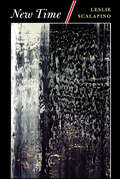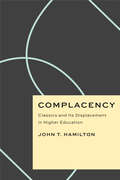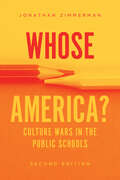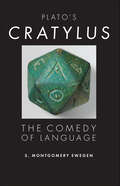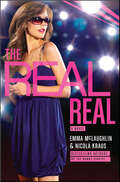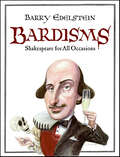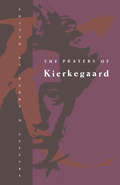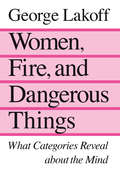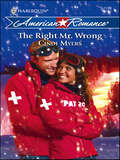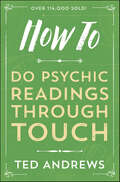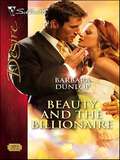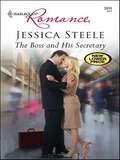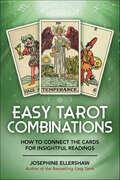- Table View
- List View
New Time (Wesleyan Poetry Series)
by Leslie ScalapinoTime spent in Japan, and everyday life in Berkeley and Oakland, come together as a kaleidoscope of words and consciousness in New Time. Leslie Scalapino pushes at the edges / spatial shape of language and experience in her new collection by writing that is itself events, which are to "punch a hole in reality."Real events, occurring in real time, are transformed in the act of writing them as perceived rather than interpreted. Phrases repeat, conjoin, break apart, and return in this challenging and innovative work, as Scalapino moves toward a "new time" wherein there is no 'inner' — one's illusion that is "the adamant social being / is inner" and "the body is a new form."
Complacency: Classics and Its Displacement in Higher Education (Critical Antiquities)
by John T. HamiltonA critical reflection on complacency and its role in the decline of classics in the academy. In response to philosopher Simon Blackburn’s portrayal of complacency as a vice that impairs university study at its core, John T. Hamilton examines the history of complacency in classics and its implications for our contemporary moment. The subjects, philosophies, and literatures of ancient Greece and Rome were once treated as the foundation of learning, with everything else devolving from them. Hamilton investigates what this model of superiority, derived from the golden age of the classical tradition, shares with the current hegemony of mathematics and the natural sciences. He considers how the qualitative methods of classics relate to the quantitative positivism of big data, statistical reasoning, and presumably neutral abstraction, which often dismiss humanist subjectivity, legitimize self-sufficiency, and promote a fresh brand of academic complacency. In acknowledging the reduced status of classics in higher education today, he questions how scholarly striation and stagnation continue to bolster personal, ethical, and political complacency in our present era.
With Needle and Brush: Schoolgirl Embroidery from the Connecticut River Valley, 1740–1840
by Stephen Huber Carol Huber Amy Kurtz Lansing Susan P SchoelwerThe Connecticut River Valley was an important center for the teaching and production of embroidered pictures by young women in private academies from the mid-eighteenth to the early nineteenth century. This book identifies the distinctive styles developed by teachers and students at schools throughout the valley, from Connecticut and Massachusetts to Vermont and New Hampshire. Needlework was a means of instilling the values of citizenship, faith, knowledge, and patriotism into girls who would become mothers in the early republic. This book describes and illustrates how these embroideries provide insight into the nature of women's schooling at this time. Over the course of their education, girls undertook progressively more complex and difficult needlework. Before the age of ten, they stitched elementary samplers on linen. As the culmination of their studies, they executed elaborate samplers, memorials, and silk pictures as evidence of the skills and accomplishments befitting a lady. Proudly displayed as enticements to potential suitors, these pieces affirmed a young woman's mastery of the polite arts, which encompassed knowledge of religious and literary themes as well as art and music.This publication has been made possible through the generous support of The Coby Foundation, Ltd., the Connecticut Humanities Council, the Connecticut Commission on Culture and Tourism, Furthermore: a program of the J. M. Kaplan Fund, and several private donors.
A Texas Christmas Wish and The Doctor's Christmas Wish
by Renee Ryan Jolene NavarroA season for healingA Texas Christmas Wish by Jolene NavarroKarly Kalakona’s new nursing job is the perfect Christmas gift. The single mom just never counted on dealing with a stubborn patient and his prodigal son. Pilot Tyler Childress is only a temporary traveler to the Texas ranch he’s spent his life escaping. But the chemistry he shares with his father’s nurse is undeniable—and has him thinking of sticking around past the holiday season…The Doctor’s Christmas Wish by Renee RyanWhen Keely O’Toole returns home to Village Green, Colorado, she suddenly becomes guardian to her cousin’s seven-year-old daughter. Keely needs help with little Felicity, and the only person she can turn to is her best friend’s brother, former army ranger Dr. Ethan Scott. Keely wants to give Felicity the best Christmas ever. Could Ethan be just the person to light up their holidays…and their lives?
Whose America?: Culture Wars in the Public Schools
by Jonathan ZimmermanIn this expanded edition of his 2002 book, Zimmerman surveys how battles over public education have become conflicts at the heart of American national identity. Critical Race Theory. The 1619 Project. Mask mandates. As the headlines remind us, American public education is still wracked by culture wars. But these conflicts have shifted sharply over the past two decades, marking larger changes in the ways that Americans imagine themselves. In his 2002 book, Whose America?, Zimmerman predicted that religious differences would continue to dominate the culture wars. Twenty years after that seminal work, Zimmerman has reconsidered: arguments over what American history is, what it means, and how it is taught have exploded with special force in recent years. In this substantially expanded new edition, Zimmerman meditates on the history of the culture wars in the classroom—and on what our inability to find common ground might mean for our future.
Plato's Cratylus: The Comedy of Language (Studies in Continental Thought)
by S. Montgomery EwegenPlato's dialogue Cratylus focuses on being and human dependence on words, or the essential truths about the human condition. Arguing that comedy is an essential part of Plato's concept of language, S. Montgomery Ewegen asserts that understanding the comedic is key to an understanding of Plato's deeper philosophical intentions. Ewegen shows how Plato's view of language is bound to comedy through words and how, for Plato, philosophy has much in common with playfulness and the ridiculous. By tying words, language, and our often uneasy relationship with them to comedy, Ewegen frames a new reading of this notable Platonic dialogue.
Francesca Caccini at the Medici Court: Music and the Circulation of Power (Women In Culture And Society Ser.)
by Suzanne G. CusickA &“priceless&” study of the life and career of the Renaissance-era Italian who was the first woman to have composed an opera (Gender & History).&“Extraordinary in its breadth, its detail, its insight, and its worth to all participants in early music…. Its contribution is not limited to the musical world, however, as Cusick&’s remarkable command and analysis of her material…has immense value for scholars engaged in cultural studies, performance studies, history, politics, or the study of difference.&”—Renaissance Quarterly A contemporary of Shakespeare and Monteverdi, and a colleague of Galileo and Artemisia Gentileschi at the Medici court, Francesca Caccini was a dominant musical figure there for thirty years. Dazzling listeners with the transformative power of her performances and the sparkling wit of the music she composed for more than a dozen court theatricals, Caccini is best remembered today as the first woman to have composed opera. Francesca Caccini at the Medici Court reveals for the first time how this multitalented composer established a fully professional musical career at a time when virtually no other women were able to achieve comparable success. Suzanne G. Cusick argues that Caccini&’s career depended on the usefulness of her talents to the political agenda of Grand Duchess Christine de Lorraine, Tuscany&’s de facto regent from 1606 to 1636. Drawing on Classical and feminist theory, Cusick shows how the music Caccini made for the Medici court sustained the culture that enabled Christine&’s power, thereby also supporting the sexual and political aims of its women. In bringing Caccini&’s surprising story so vividly to life, Cusick ultimately illuminates how music making functioned in early modern Italy as a significant medium for the circulation of power.
The Real Real: A Novel
by Nicola Kraus Emma McLaughlinThe bestselling authors of The Nanny Diaries introduce a new heroine to root for: Jesse O'Rourke, coffee barista, high school senior, and unwitting reality TV star.Imagine there was never a Laguna Beach, a Newport Harbor, the shimmering Hills. Imagine that your hometown—your school—is the first place XTV descends to set up cameras.Now imagine they've trained them on you.When Jesse O'Rourke gets picked for a "documentary" being filmed at her school in the Hamptons she's tempted to turn down the offer. But there's a tuition check attached to being on the show, and Jesse needs the cash so she can be the first in her family to attend college. All she has to do is trade her best friend for the glam clique she's studiously avoided, her privacy for a 24/7 mike, and her sense of right and wrong for "what sells on camera." . . . At least there's one bright spot in the train wreck that is her suddenly public senior year: Jesse's crush has also made the cast.As the producers manipulate the lives of their "characters" to heighten the drama, and Us Weekly covers become a regular occurrence for Jesse, she must struggle to remember one thing: the difference between real and the real real.
Bardisms: Shakespeare for All Occasions
by Barry Edelstein“Browse the delightful Bardisms to find a fitting quote for any mood, moment, or occasion. But read it through to learn how to enjoy Shakespeare and bring more of his language into your daily life.” — Jacob Weisberg, Editor of Slate magazine and author of Bushisms“A fantastic reference for anyone who loves Shakespeare!” — Steve Martin From renowned Shakespearean director Barry Edelstein comes Bardisms: a straightforward, accessible guide to using Shakespeare’s wit and wisdom at special occasions of every type. Over the course of his career, Edelstein has directed more than half of Shakespeare’s plays, and he brings all his passion, insight, and years of study to Bardisms. In the words of Adam Gopnik (Through the Children's Gate), “Barry Edelstein knows more about Shakespeare, and in a less pedantic manner, than nearly anyone I know.”
The cLEAN Momma Workout: The Ultimate Multitasking Solution for Busy People Everywhere
by Carolyn BarnesLose weight, get fit, and stay healthy while you clean your house with this inspirational fitness guide for busy moms.With an endless to-do list getting in the way of her workout time, busy mom Carolyn Barnes decided to take matters into her own hands. She created the ultimate multitasking program: The cLEAN Momma Workout. Soon she was losing weight fast and her home was cleaner than ever.Barnes's Taskercise program will allow you to get fit, lose weight, and have fun—all while making your home sparkling clean. You'll get both your home and your body in shape, no matter where your household chores take you. Just a few of the Taskercises you'll learn are:In the kitchen:The Rag DragCupboard Calf RaiseIn the living room:The Vacuum LungePillow Plump and PumpWhile doing laundry :Detergent Bottle DumbbellsThe Laundry Leg LiftWith Taskercise, you can stay active anywhere: in the car, at the playground, in the supermarket, on an airplane, at the pool, and at the gas station. In addition, dozens of healthy, kid-friendly recipes make cLEAN eating possible for the whole family. Get more out of life with The cLEAN Momma Workout, and discover how easy it is to look and feel great while taking care of everything on a modern family's to-do list.
The Prayers of Kierkegaard (Phoenix Bks.)
by Perry D. LefevreSoren Kierkegaard's influence has been felt in many areas of human thought from theology to psychology. The nearly one hundred of his prayers gathered here from published works and private papers, not only illuminate his own life of prayer, but speak to the concerns of Christians today. The second part of the volume is a reinterpretation of the life and thought of Kierkegaard. Long regarded as primarily a poet or a philosopher, Kierkegaard is revealed as a fundamentally religious thinker whose central problem was that of becoming a Christian, of realizing personal existence. Perry D. LeFevre's penetrating analysis takes the reader to the religious center of Kierkegaard's world.
Threshold Songs (Wesleyan Poetry Series)
by Peter GizziAbout Threshold Songs, the voices in these poems perform at the interior thresholds encountered each day, where we negotiate the unfathomable proximities of knowing and not knowing, the gulf of seeing and feeling, the uncanny relation of grief to joy, and the borderless nature of selfhood and tradition. Both conceptual and haunted, these poems explore the asymmetry of the body's chemistry and its effects on expression and form. The poems in Threshold Songs tune us to the microtonal music of speaking and being spoken. Check for the online reader's companion at http://petergizzi.site.wesleyan.edu.
A Holiday Match
by Lois Richer Belle CalhouneA season for second chancesAn Alaskan Christmas by Belle Calhoune Single mom Maggie Richards is ready for a new start in Love, Alaska. And her little boy is ready for a new dad! But Maggie just wants to open her gift shop in time for Christmas—with help from childhood friend Finn O&’Rourke. Like Maggie, Finn&’s hiding too many secrets to ever wed. But Maggie and her son have him dreaming of a ready-made family for Christmas…North Country Dad by Lois Richer Widower Grant Adams loves his twin stepdaughters, but what does he know about being a full-time father? And when he meets Dahlia Wheatley, he realizes the twins need more than a nanny—they need a mother. With her own harrowing past, Dahlia is as reluctant to get emotionally involved as Grant is. Yet his startling proposition just may form a happy new family of four.2 Uplifting Stories An Alaskan Christmas and North Country Dad
Dynamics, Geometry, Number Theory: The Impact of Margulis on Modern Mathematics
by David Fisher, Dmitry Kleinbock, and Gregory SoiferThis definitive synthesis of mathematician Gregory Margulis’s research brings together leading experts to cover the breadth and diversity of disciplines Margulis’s work touches upon. This edited collection highlights the foundations and evolution of research by widely influential Fields Medalist Gregory Margulis. Margulis is unusual in the degree to which his solutions to particular problems have opened new vistas of mathematics; his ideas were central, for example, to developments that led to the recent Fields Medals of Elon Lindenstrauss and Maryam Mirzhakhani. Dynamics, Geometry, Number Theory introduces these areas, their development, their use in current research, and the connections between them. Divided into four broad sections—“Arithmeticity, Superrigidity, Normal Subgroups”; “Discrete Subgroups”; “Expanders, Representations, Spectral Theory”; and “Homogeneous Dynamics”—the chapters have all been written by the foremost experts on each topic with a view to making them accessible both to graduate students and to experts in other parts of mathematics. This was no simple feat: Margulis’s work stands out in part because of its depth, but also because it brings together ideas from different areas of mathematics. Few can be experts in all of these fields, and this diversity of ideas can make it challenging to enter Margulis’s area of research. Dynamics, Geometry, Number Theory provides one remedy to that challenge.
Betrayal
by Georgina DevonLady Pippa LeClaire was desperate to find Philip, her twin, even posing as a boy to search the battlefield at Waterloo for the wounded. As a healer, she couldn't ignore the devastation, and did her best to help, saving the leg of Deverell St. Simon.Given the task of nursing Dev, Pippa couldn't reveal her true self to him, especially when he was told by the Iron Duke to find Philip, believed by them all to be a traitor. She had to clear her twin's name, even if it meant losing Dev, the man she'd grown to love....
Women, Fire, and Dangerous Things: What Categories Reveal about the Mind
by George LakoffA critique of the assumptions the mind makes, of how humans tend to categorize objects and ideas, and of the implications of these modes of thought.“Women, Fire, and Dangerous Things presents some of the most stimulating ideas on mind and meaning that I have ever read. It . . . has far-reaching consequences and is sure to rattle the foundations of thinking and research in the cognitive sciences. Lakoff’s book is a tremendous piece of scholarship and an intellectual achievement of the first order. . . . No psychologist should be unfamiliar with this book.” —American Journal of PsychologyWithin the past decade, research in the cognitive sciences—psychology, linguistics, anthropology, philosophy, and artificial intelligence—has led to a new understanding of human thought. The prevailing view has been that reason is the disembodied manipulation of symbols, but George Lakoff is among the leading advocates of a new view proposing the human reason is imaginative, metaphorical, and intrinsically linked with the human body.Much of the support for the new, “experientialist” view of thought has come from studies of how humans categorize objects and ideas. It seems common sense that objects are grouped in categories because they share some trait. Such cases exist but are not the norm. The Dyirbal language of Australia is striking, for example, in that the words for women, fire, and dangerous things fall into one category, but not because women are considered fiery or dangerous. Citing a broad spectrum of research, Lakoff offers a sweeping critique of the assumptions about the mind that have prevailed since Aristotle. In proposing his alternative theory, Lakoff illustrates the basic creative process of human thought.“Its publication should be a major event for cognitive linguistics and should pose a major challenge for cognitive science. In addition, it should have repercussions in a variety of disciplines, ranging from anthropology and psychology to epistemology and the philosophy of science. . . . Lakoff asks: What do categories of language and thought reveal about the human mind? Offering both general theory and minute details, Lakoff shows that categories reveal a great deal.” —American Scientist
Cherubino's Leap: In Search of the Enlightenment Moment
by Richard KramerFor the Enlightenment mind, from Moses Mendelssohn’s focus on the moment of surprise at the heart of the work of art to Herder’s imagining of the seismic moment at which language was discovered, it is the flash of recognition that nails the essence of the work, the blink of an eye in which one’s world changes. In Cherubino’s Leap, Richard Kramer unmasks such prismatic moments in iconic music from the Enlightenment, from the “chromatic” moment—the single tone that disturbs the thrust of a diatonic musical discourse—and its deployment in seminal instrumental works by Emanuel Bach, Haydn, and Mozart; on to the poetic moment, taking the odes of Klopstock, in their finely wrought prosody, as a challenge to the problem of strophic song; and finally to the grand stage of opera, to the intense moment of recognition in Gluck’s Iphigénie en Tauride and the exquisitely introverted phrase that complicates Cherubino’s daring moment of escape in Mozart’s Figaro. Finally, the tears of the disconsolate Konstanze in Mozart’s Die Entführung aus dem Serail provoke a reflection on the tragic aspect of Mozart’s operatic women. Throughout, other players from literature and the arts—Diderot, Goethe, Lessing among them—enrich the landscape of this bold journey through the Enlightenment imagination.
Buried Ranch Secrets
by Lisa ChildsThe closer they get to the truthThe deadlier it becomes…When a body is found on his family ranch, single dad Cody Shepard will do anything to help find the murderer, even work with FBI agent Bethany Snow, the woman who broke his heart. But the shocking identity of the victim reveals painful secrets about Cody's past and sets off a deadly chain of discoveries…and a new threat.
The Right Mr. Wrong
by Cindi MyersThere's something about Hagan Ansdar that rubs Maddie Alexander the wrong way. The Norse-god ski bum is too sure of himself, too cynical...and way too good-looking. His charms may work on the tourists he dates-and drops-but Maddie's been around the slopes long enough to avoid his type. Besides, she's too busy figuring out what to do with her life now that she's off the racing circuit. But for someone who never dates the locals, Hagan is spending a lot of time with her. And he seems to be the only one to understand her plight. Could there be a secret side to him?If so, maybe they're more alike than she thinks....
How To Do Psychic Readings Through Touch
by Ted AndrewsYou've probably heard the expression, "If these walls could talk..." With psychic touch, or psychometry, you can learn to read the energy of objects, places, and people.Popular author Ted Andrews presents a positive and straightforward system for developing your psychic skills. With this guide, learn the basics of psychometry, why it works, and simple techniques for doing your own readings. Using psychic touch, you can tune in to the world around you in a fascinating new way. Discover how to:Find lost objects and peopleSense health imbalancesAssess places and objects for harmonious or challenging energyUse psychic skills responsibly and ethicallyEnjoy a richer and more informed perspective on life
The Subject of Holocaust Fiction (Jewish Literature And Culture Ser.)
by Emily Miller BudickFictional representations of horrific events run the risk of undercutting efforts to verify historical knowledge and may heighten our ability to respond intellectually and ethically to human experiences of devastation. In this captivating study of the epistemological, psychological, and ethical issues underlying Holocaust fiction, Emily Miller Budick examines the subjective experiences of fantasy, projection, and repression manifested in Holocaust fiction and in the reader's encounter with it. Considering works by Cynthia Ozick, Art Spiegelman, Aharon Appelfeld, Michael Chabon, and others, Budick investigates how the reading subject makes sense of these fictionalized presentations of memory and trauma, victims and victimizers.
Beauty and the Billionaire
by Barbara DunlopBeyond businessBillionaire Hunter Osland can't believe it. One of the employees in the company his family just bought happens to be his one-night stand, Sinclair Mahoney. With their passion-filled encounter still fresh in his memory, Hunter wants to rekindle their connection. But Sinclair's sudden wariness of tangling with her new boss sets the CEO on a different course of action. First he'll show Sinclair how desirable she is in the boardroom...then he'll prove it in the bedroom.
The Boss and His Secretary
by Jessica SteeleWhen Taryn Webster takes a job as secretary togorgeous millionaire Jake Nash, she is already fightingher attraction to him. Taryn is determined not to mixbusiness and pleasure, so she tries to keep her distance.But then Jake asks her for her help after hours! Atfirst Taryn refuses, but she can''t resist his persuasivearguments...nor his charming smile and temptinggray eyes.Could this office romance lead to a journeydown the aisle?
Easy Tarot Combinations: How to Connect the Cards for Insightful Readings
by Josephine EllershawCombine the Cards, Tell their Full Story & Get the Answers You NeedDrawing on more than fifty years of tarot experience, Josephine Ellershaw teaches you how to link the cards together to produce a cohesive reading. She takes you through the deck, sharing keywords, visual prompts, applied meanings, and featured combinations from her personal tarot toolbox, gleaned from real readings. Ellershaw also shares predictive reading techniques to help you find connections interwoven through your cards.In tarot, everything means something, even if it's not immediately apparent. Easy Tarot Combinations adds depth and dimension to your readings by showing you how the cards relate to and reinforce one another. Ellershaw makes it easy to understand various connections, from similar and opposing cards to multiple numbers and badly aspected cards, to seamlessly blend the results of your reading. This book demonstrates that combinations aren't just lists you need to memorize—they are extensions of yourself and the personal language you share with your cards.
Good House Hunting: 20 Steps to Your Dream Home
by Dennis Wedlick Philip LangdonWithout a doubt, the most important investment of your life will be your home. No other purchase will matter more to your lifestyle, financial future, and personal well-being. It is never too late or too soon to set a course for creating a home that will provide the maximum return and fulfill your dreams.With step-by-step instruction, Good House Hunting will take you on an inspirational and practical journey to finding your dream home -- both within your imagination and out in the real estate world.For home buyers, Good House Hunting will help you navigate the complex process of finding the property with the greatest potential.For home owners, Good House Hunting provides the framework to help you maximize your current property.For dreamers, Good House Hunting sets out the course for dream home planning, so when you are ready you will have a plan.If you long to discover what home would be a worthy investment for improving your fortunes and accomplishing your dreams, Good House Hunting is for you.
